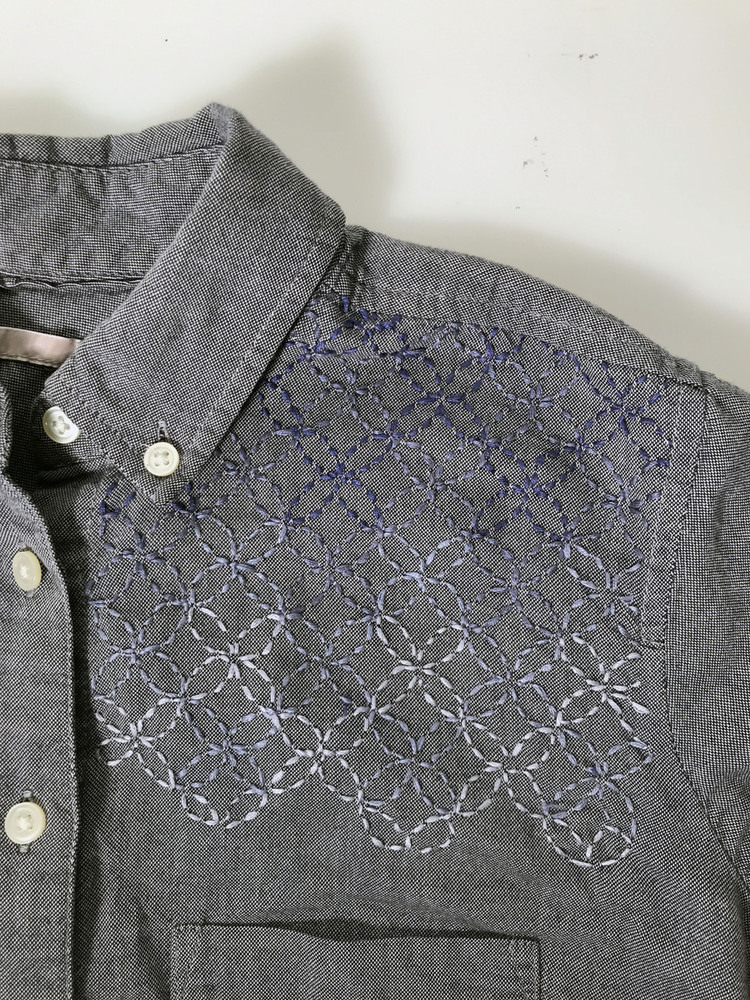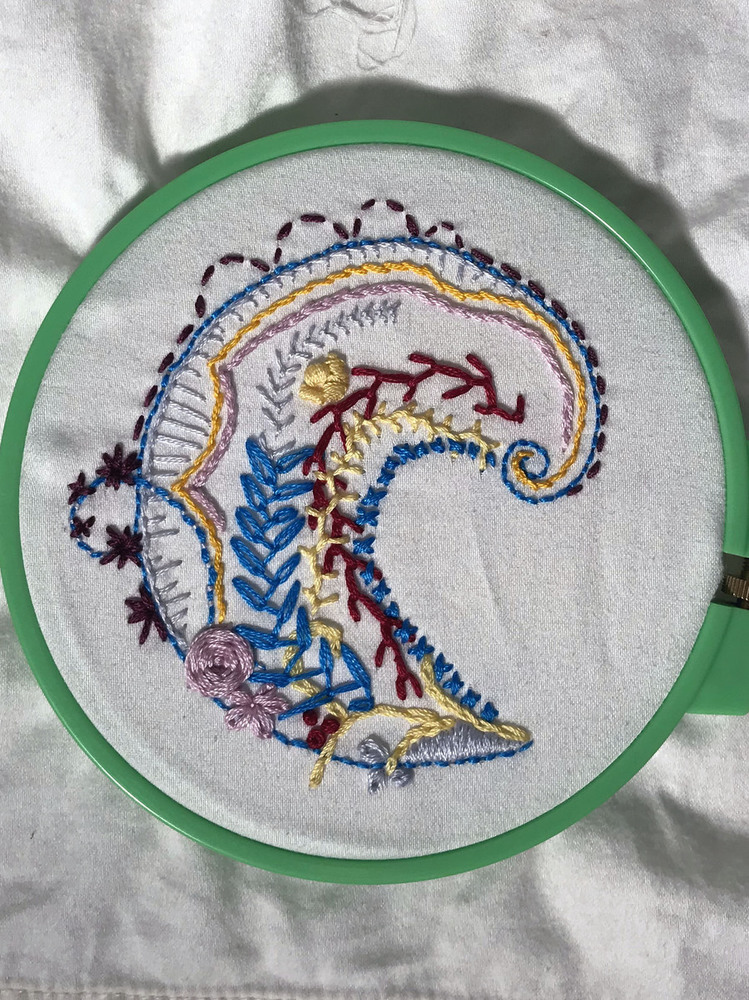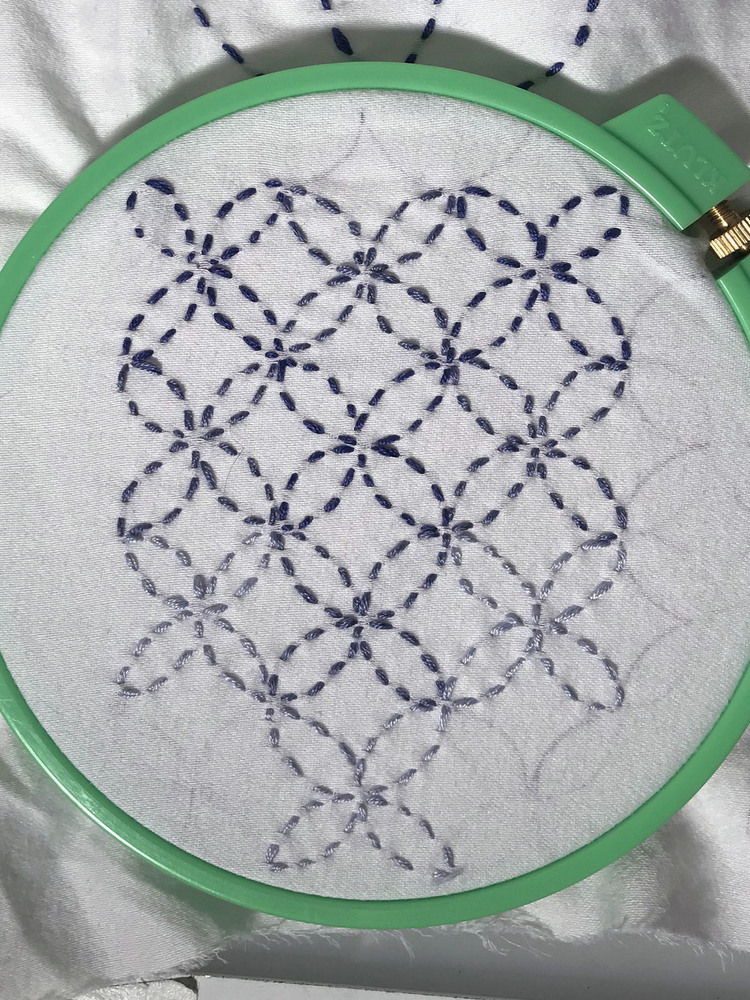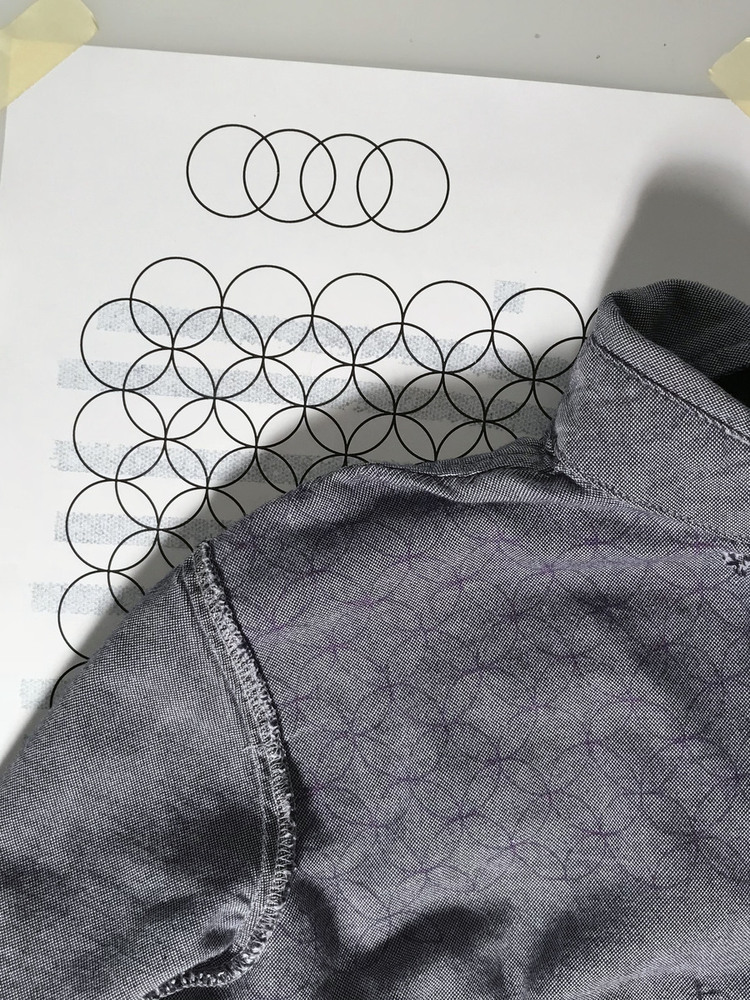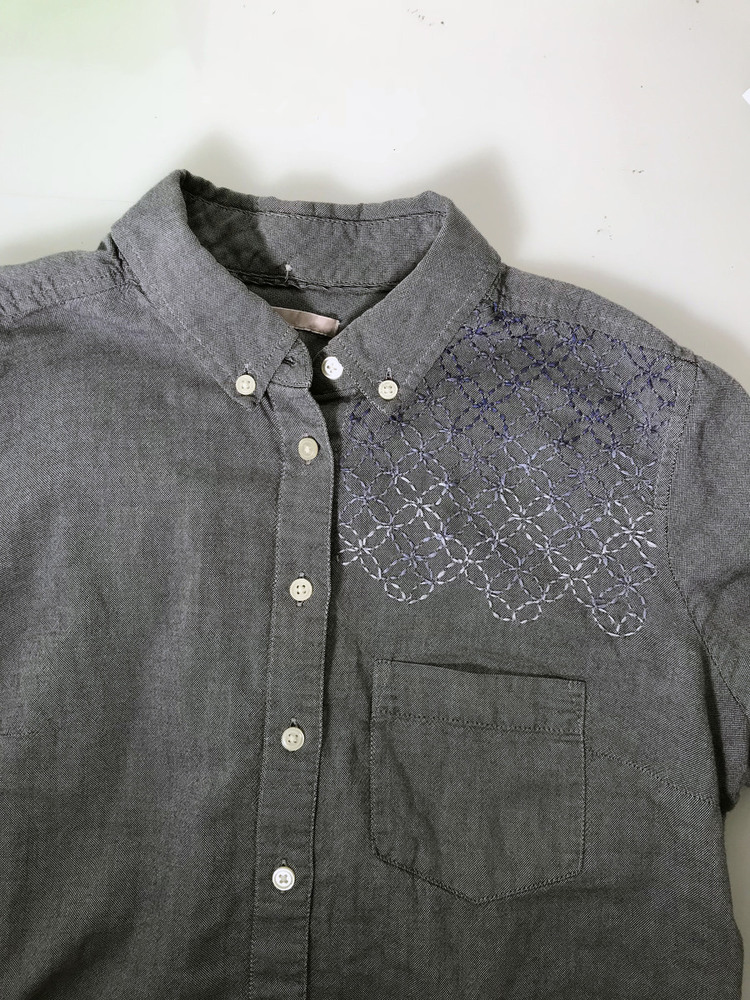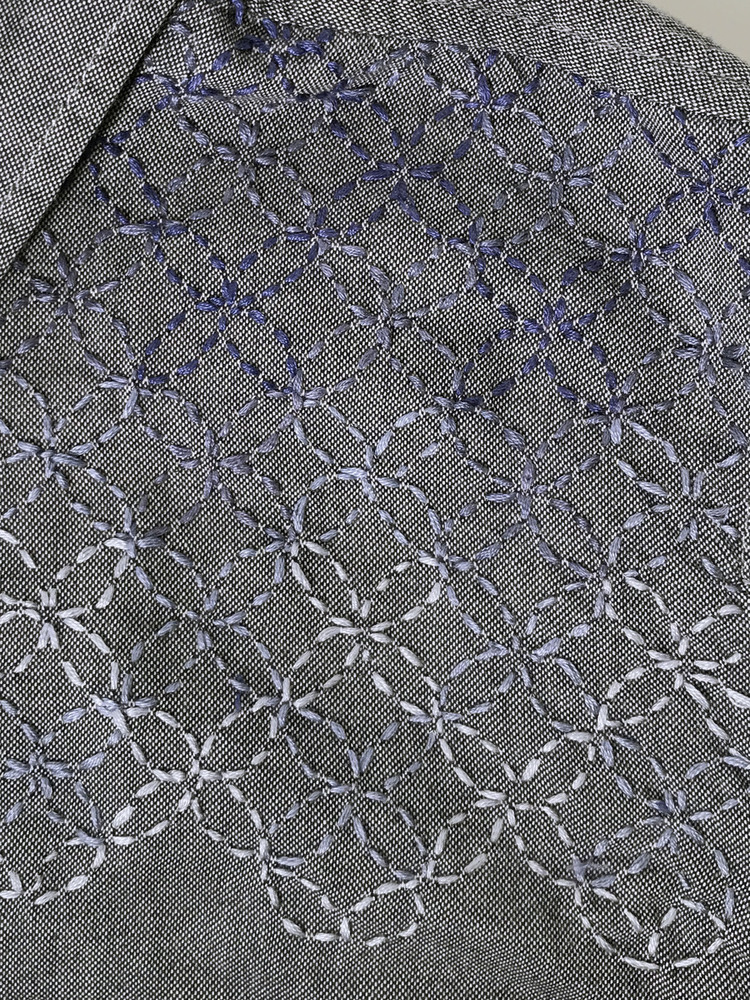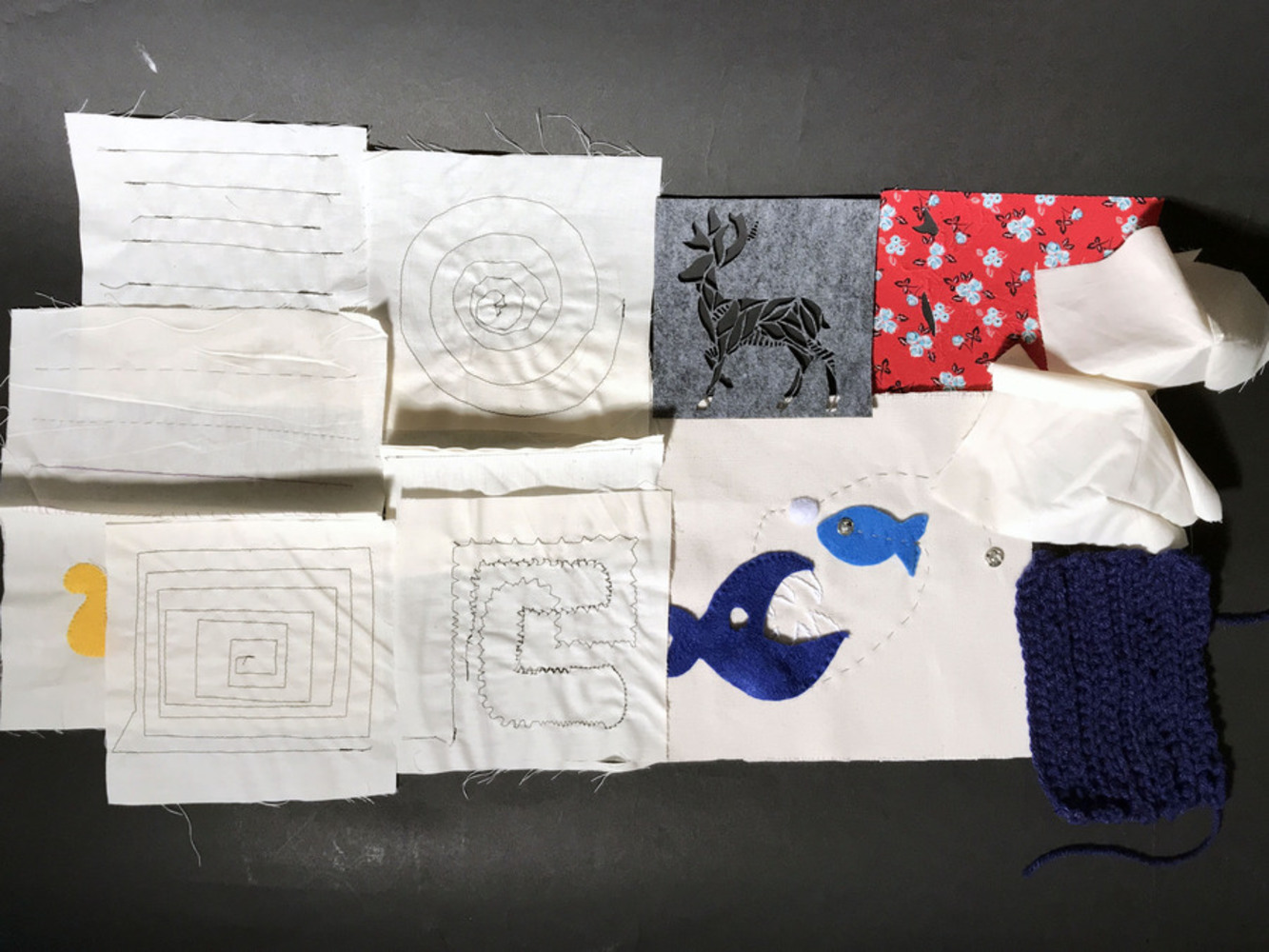Process
From the start of this project, I knew that I wanted to use embroidery to decorate one of my old shirts, but was unsure as to what stitch or pattern to use. Therefore, the first sampler I created for this project was a free-hand exploration of many different embroidery stitches. However, I wanted to embroider something that connected to me as an individual, so I started to research Japanese embroidery techniques, eventually choosing sashiko. As a fourth generation Japanese American, I'm not very connected to Japan or Japanese culture, and I wanted to take this opportunity to learn and explore that vein.
At its core, sashiko is made up of running stitches, arranged into decorative patterns. Its name translates to "little stabs," in reference to how sashiko is created. Sashiko was first used during the Edo era, and was originally used to repair or reinforce clothing.
Once I had chosen to use sashiko, I decided on a pattern, and created/printed out a template for that pattern on Adobe Illustrator. I then transfered the pattern onto muslim, and experimented with different colors and color combinations. I decided on a gradation from dark at the top, to light at the bottom, used a FriXion Pen to mark the pattern on the back side of my shirt, and embroidered the design.
